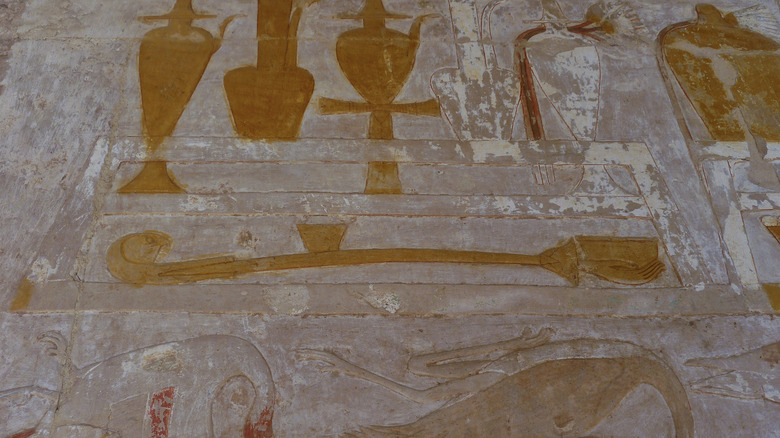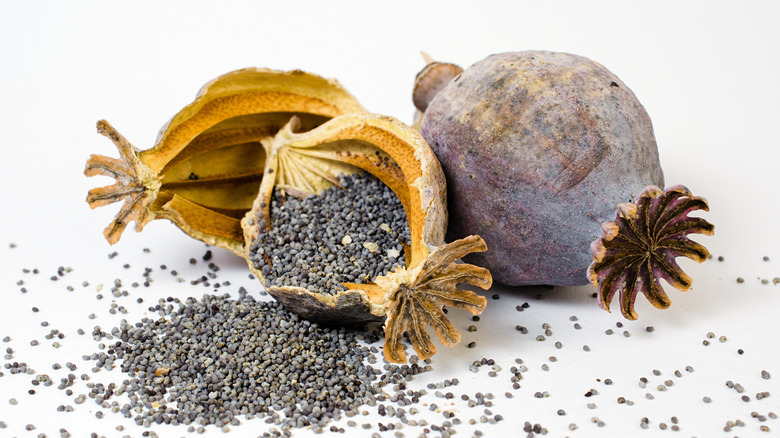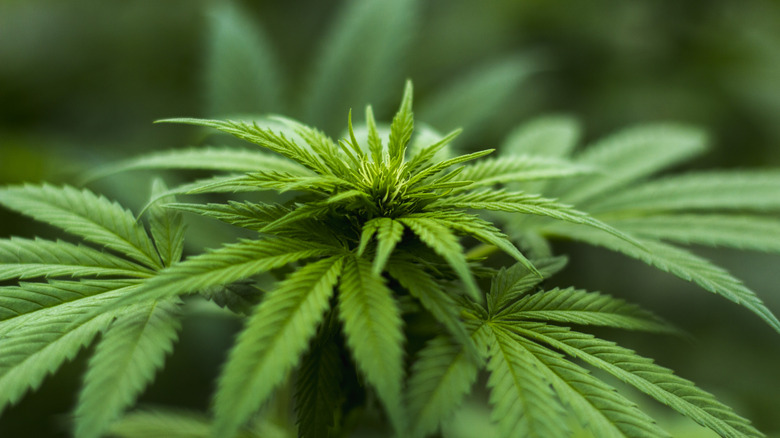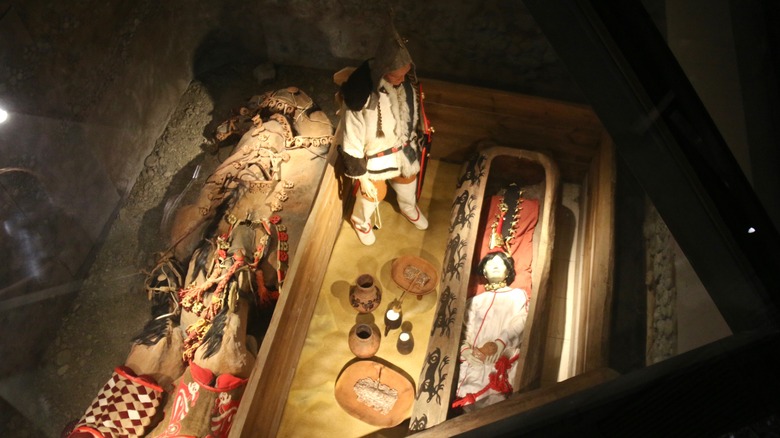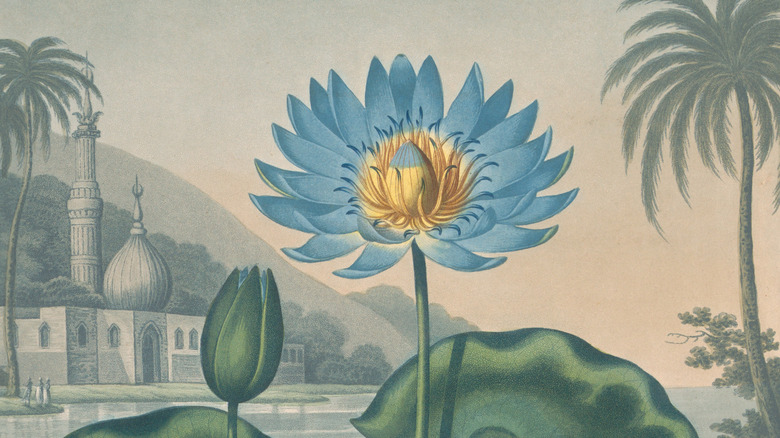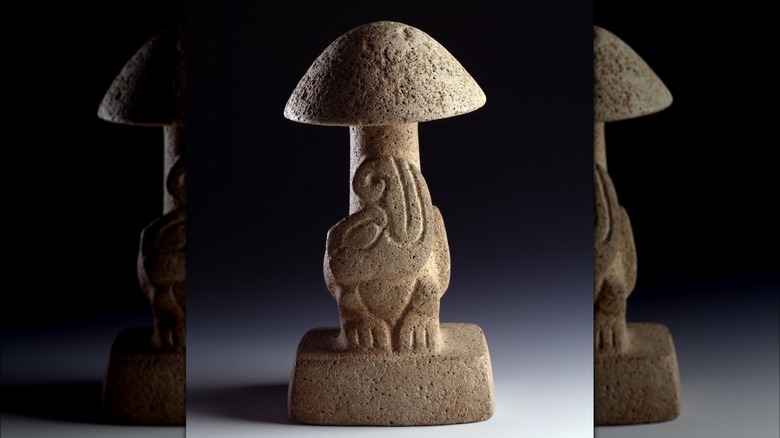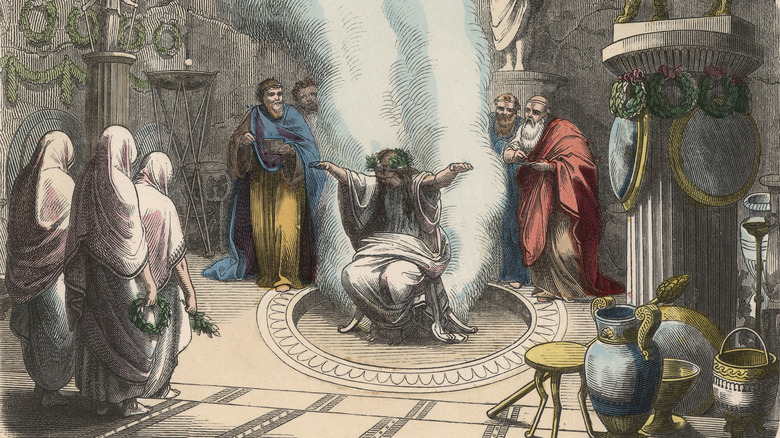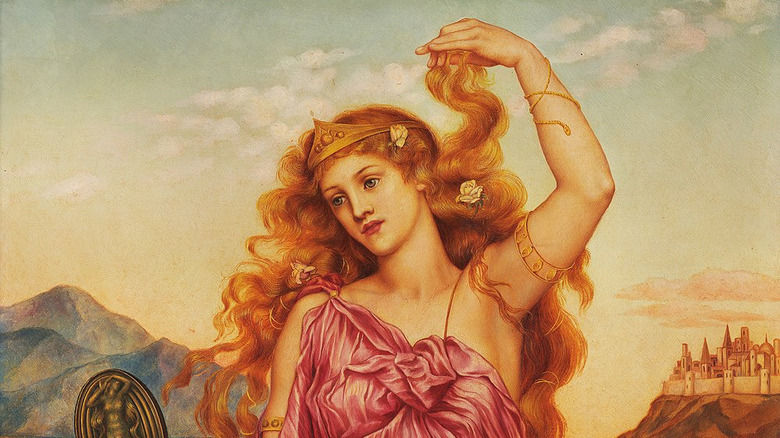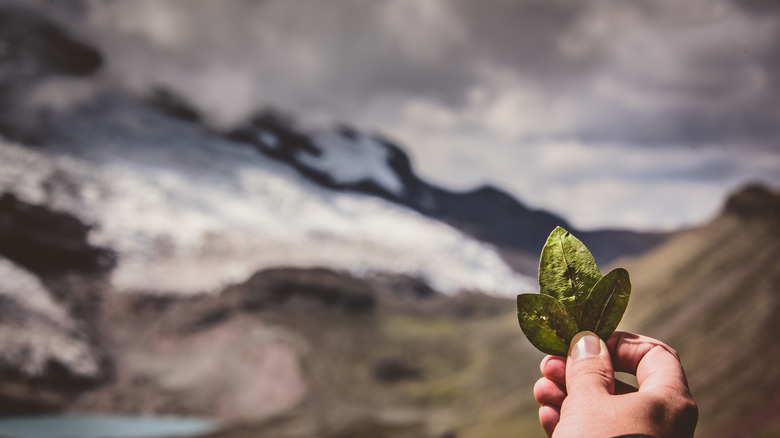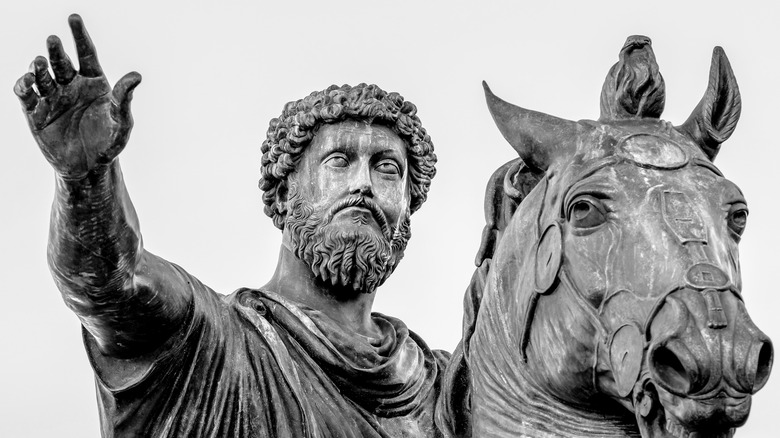How Ancient People Consumed Drugs (And Why)
Though news reports may make drugs feel like a very modern problem, the reality is that mind-altering drugs have been around since practically the beginning of humanity. Some researchers speculate that early human ancestors were experimenting with plant-based highs millions of years ago, while alkaloids like betel nut were being used nearly 7,000 years before the present. By the time the first cities arose in and around Mesopotamia, archaeological records indicate that opium consumption was well underway, both as a medical treatment and as a kind of spiritual amplifier. Clay tablets dated to 8,000 years ago even contain some of the earliest prescriptions for opium.
Humanity's reasons for using drugs are as diverse as they are ancient. People certainly used them for many of the same reasons that modern folks do: taking in substances to feel euphoria or dull painful or difficult experiences. Accounts of ancient drug abuse certainly attest to the addictive side of drugs, as when the Greek Odysseus fled the land of the blissed-out but kind of useless Lotus-eaters in Homer's epic poem, the "Odyssey."
That's not the whole story, however. Evidence suggests that ancient people across the globe also employed drugs as stimulants to help them work and not feel pain. In other contexts, worshippers employed psychoactive substances to take part in religious rituals and get closer to both the gods and departed ancestors in another reality. As time went on, ancient humans developed a complex and sophisticated understanding of drugs that still influences us today.
Some Mesopotamian drugs may have been made in an ancient pharmacy
Though ancient people may have processed some drugs on their own, others came out of dedicated operations. Archaeologist Luca Peyronel helped to collect and analyze samples collected from just such a unique room in a high-class dwelling in ancient Syria. Though the room contained fireplaces and vessels that were often associated with food, Peyronel told Science that the residues found inside actually came from plants. And these were certainly not gathered simply to hit some king's dinner plate. Instead, the archaeological team found herbal remedies that would have been used to treat injury and disease. Most strikingly, they found poppy residue that was almost certainly from large-scale opium production.
But why was there an opium operation going on in a 4,000-year-old palace? That's trickier to pin down. It's likely that, by this point, ancient people had already figured out that poppy extracts helped treat pain. But they had surely also experienced the hallucinatory effects of opium which may have had a significant religious association. Ancient texts reference priests quaffing ritual drinks that may have contained opium and allowed them to commune with the gods. Other researchers claim that banquet scenes from throughout Mesopotamia and nearby ancient kingdoms show people drinking something more mind-altering than beer or wine. These bits of evidence are hardly smoking guns, but the fact that this ancient Syrian pharmacy was so close to religious and ritual spaces shouldn't be ignored.
Early cannabis use took place in a tomb
Cannabis first appears in Central or Southwest Asia about 12,000 years ago. People moving out of the region brought cannabis seeds to many lands, as ancient writers mention its presence in places like Egypt, Greece, and China. By 440 B.C., Greek historian Herodotus was telling readers that Scythians would burn hemp seeds, inhale the smoke, and turn very, very happy in short order. While those plants started as wild strains with relatively low levels of tetrahydrocannabinol (THC), the chemical compound in cannabis that produces a high, strains associated with people appear to have been cultivated for higher concentrations of THC.
While the cannabis plant also produces useful hemp fibers and oil, researchers hypothesize it became known for its less-tangible effects once ancient people began heating the plant to refine it. Inhaling fumes during processing may have produced an intriguing effect that was quickly exploited.
In China, there's strong evidence for ritual use of cannabis by 500 B.C. According to a 2019 study published in Science Advances, a team of archaeologists working in the Jirzankal Cemetery (in what's now western China) uncovered cannabis residue from braziers. Researchers concluded that these braziers were almost certainly used during funeral rituals to burn cannabis and produce a euphoric high that may have helped people connect with the spiritual realm. Cannabis residues, seeds, and plant matter have been found in other Chinese cemeteries, including in a burial shroud that's about 2,500 years old (via Economic Botany).
Bronze Age Europeans left behind evidence of alkaloid and stimulant use
Off the Mediterranean coast of Spain, researchers examining 3,000-year-old human hairs found in a burial site on the island of Menorca uncovered clear evidence that ancient humans were using drugs. According to a 2023 study in Scientific Reports, the person from whose head the hair grew ingested multiple drugs, namely plant-derived alkaloids that would have produced a euphoric high. This finding was especially significant because, while archaeologists have found plenty of objects that strongly hint at drug use (like residue-containing vessels, pipes, and seeds), this is one of the first times they have found direct evidence of that use in ancient human remains.
The hair, which was dyed and sealed in tubes in a postmortem ritual, was found inside a cave that had been used as burial grounds for over 200 people. However, the hair-collecting ritual was only performed on a select few individuals, suggesting that they may have been deemed special and may have even acted as drug-taking shamans. Chemical analysis found that the hairs of these people contained traces of local plants that produced, among other compounds, scopolamine and atropine. Researcher Dagmara Socha told CNN that both of these drugs can produce intense, even frightening visions and have been used in a variety of cultures and contexts, including indigenous groups in South America who wanted to connect to their ancestors in religious ceremonies. The Bronze Age people of this island may have been doing much the same.
Cannabis was used for pain relief
While many researchers are comfortable saying that cannabis was ritually used throughout the ancient world, there's also good evidence that it had a more practical purpose: painkilling. Ancient Egyptians may have used it as both an antibiotic of sorts, as well as an anti-inflammatory agent. Greek physicians appear to have used cannabis similarly.
In 2014, Russian archaeologist Natalia Polosmak wrote in Science First Hand that an MRI examination of a woman from the ancient Pazyryk people revealed surprising new information about early cannabis use. The woman, who lived on the Ukok plateau between what's Russia and China about 2,500 years ago, was desperately ill at the time of her death. The scans revealed evidence of metastatic breast cancer that had spread to her spine, as well as evidence of serious injuries incurred in a fall — perhaps from a horse that she had been too weak to ride. She also appears to have suffered from osteomyelitis, a painful bone infection that would have plagued her for extended periods.
However, Polosmak writes that this ancient woman lived for months after her fall. Besides circumstantial evidence that others cared for her, she also had access to pain relief in the form of hemp, which was found in her tomb. When burned and inhaled, the cannabis may have pushed the woman into an altered state where she acted as a conduit between the human world and the realm of the gods and ancestors.
[Featured image by Sue Fleckney via Wikimedia Commons | Cropped and scaled | CC BY-SA 2.0]
The ancient Egyptians used a special blue flower
Though many people today prize water lilies for their beautiful flowers, the ancient Egyptians may have used one particular lily for another purpose. Known under the scientific name Nymphaea caerulea, the blue water lily was well known to Egyptians, who depicted it in artwork of religious rituals and texts concerning the afterlife. Even the mega-famous mummy of Tutankhamun, the young pharaoh who died over 3,000 years ago, was found sprinkled with blue water lily flowers, indicating an important religious side of the plant. The ancient Mayan people also associated it with their gods, even though they and their Nymphaea lilies were situated across the African continent and the Atlantic Ocean from Egypt.
But what, exactly, did the blue water lily do to someone who consumed it? It can contain aporphine, an alkaloid that, if ingested at high enough doses, can tip someone over into a state of hallucinatory euphoria. It can also act as a kind of ancient Viagra, which the authors of a 2004 paper in the Journal of the Royal Society of Medicine speculated could be why it was associated with highly sexualized rites in ancient Egypt.
Mesoamerican cultures employed hallucinogens for religious ceremonies
Over the long and diverse course of Mesoamerican history, people used a wide array of consciousness-altering drugs for both medicinal and ritual purposes. For Mayan worshippers in the period around 250 B.C. to A.D. 900, that meant downing a drink known as balché, a low-alcohol honey-sweetened beverage that also contained the hallucinogen ergine. Balché may have also been consumed with other psychoactive drugs, including plant-derived alkaloids that would have created more intense hallucinations. Combined with the fact that rituals could take place in underground caves with repetitive music and fasting, worshippers could have attained dramatically-altered states.
Fungi also played a critical role in other Mesoamerican ceremonies. Both the Maya and Aztec peoples consumed psilocybin-laced mushrooms, which were so ritually important that the fungi were reportedly ground into significant structures. Individual gods, like the Mixtec Seven Flowers, the Toltec Tlaloc, and the Aztec Xochipilli, were also sometimes depicted with psilocybin mushrooms.
But perhaps the oldest Mesoamerican drug of all, at least as far as archaeologists can tell, is peyote. Derived from a cactus that's utterly loaded with over 60 alkaloids, it produces visual hallucinations that are made all the more intense by upending a user's sense of time and gravity. It's been used ritually in the Americas for over 5,000 years, though moralizing Spanish colonizers attempted to stamp out the practice in the 18th century. However, it's still in ritual use today by some indigenous groups in the United States and Mexico.
Ancient Greeks might have used psychoactive gas for prophesying
In ancient Greece, oracle could mean any attempt at understanding the gods' plans. Oracles could also be people who purportedly spoke with the gods, delivering divine pronouncements at temples like one dedicated to Apollo at Delphi. The oracle there was a woman known as the Pythia, who spoke to Apollo or, later, Dionysus to advise humans on political matters. As part of the complicated oracular ritual, the Pythia would sit in an underground portion of the temple, chewing laurel leaves, and enter an altered state before delivering her pronouncements.
Ancient writers noted that the oracle at Delphi was associated with vapors rising from a particular spot in the ground that would induce visions. Historians and archaeologists have since gone back and forth as to whether or not the oracle was inhaling mind-altering fumes from the earth. Writing for Archaeology Odyssey (via Biblical Archaeology Society), Jelle Zeilinga de Boer and John R. Hale state that, in 1996, their team found clear evidence of geological fissures running beneath the ancient temple. Combined with a now-dry spring and petrochemicals, the authors propose that geological activity may have vaporized those chemicals into hydrocarbon-laden gases that produced an intoxicating effect.
Ancient descriptions of the Pythia aren't complete and a 373 B.C. earthquake may have closed up the gas-producing fissure, so it's hard to make a final conclusion. We may never know for certain if the oracle at Delphi was high, but the circumstantial evidence remains intriguing.
Greek people may have used opiates to dull painful memories
Ancient people may have turned to mind-altering substances to connect with the gods or to party, but also in an attempt to deal with grief and suffering. Take the rather grim little dinner party held in book four of the "Odyssey." Odysseus' son, Telemachus, travels to Sparta in search of his long-lost father. There, he visits king Menelaus and his wife, Helen. Yes, it's that Helen, the one whose move to Troy supposedly started the Trojan War. Before she discusses all that, Helen puts something in their drinks. In Homer's words, "she cast into the wine of which they were drinking a drug to quiet all pain and strife, and bring forgetfulness of every ill."
What was that drug? In the original Greek, it was known as "nepenthe" and was said to be cultivated in Egypt. Otherwise, it remains mysterious. Some modern scholars have dismissed nepenthe as a purely poetic invention, while others say the wine had more to do with dulling pain than whatever Helen mixed into her guests' cups. Others feel certain that the copacetic effect of nepenthe must mean that it was cannabis (though it's unclear how it would have been added to wine) or opium, which was mixed with alcohol by Victorians to create the highly addictive tincture known as laudanum. Whatever the truth of nepenthe, it's clear that the concept of ingesting drugs to forget or smooth over troublesome emotions was familiar to the ancients.
Coca had a variety of purposes in the ancient Andes
In the Andes mountain range of South America, one plant has been a key part of indigenous medical kits and rituals for thousands of years: coca. Like many other ancient drugs, the coca plant is teeming with alkaloids that can be processed and consumed for a mind-altering experience. Today, it's most notorious as the source of the stimulant cocaine, the most psychoactive of the plant's alkaloid compounds. Traditionally, indigenous people did not engage in "Scarface"-style drug operations but instead chewed the leaves of the coca plant for a relatively mild stimulant effect. It also acts as a low-level painkiller and dulls hunger. Besides its practical use, coca was also ritually important, illustrated by its part in multiple rituals and the fact that ancient remains in the region have been found with coca leaves placed in the mouths of the deceased.
The perking-up factor of coca leaves proved very interesting to Incan rulers and Spanish overlords, the latter of whom even gave farm workers a regular ration of coca leaves to keep them going through a day of heavy manual labor. Ironically enough, that came after an ill-fated attempt by colonizers to eradicate the use of coca altogether. Yet coca was so deeply entrenched in the daily and ritual life of indigenous people that the move was all but doomed to fail.
Ancient writers warned of drug addiction
As much as ancient people across the globe were ready to do drugs for a variety of reasons, many were also painfully aware of the dangers of addiction. In the "Odyssey," Homer wrote of the quasi-mythical land of the Lotus-eaters. Some of his men consume the lotus and lose all motivation to make their way home. They only get back on the ship after other sailors drag them on board.
In Rome, opium was used to treat a diverse array of conditions, from insomnia to gastrointestinal upset, to pain relief. Finding textual evidence of dependence on this addictive drug is difficult amongst ancient sources — but not impossible. Philosopher-king Marcus Aurelius appears to have been addicted to opium, referred to as theriac in the writings of Roman historian Dio Cassius. In his "Roman History," Dio writes that the studious Marcus Aurelius was hardly the epitome of manly fortitude, often suffering from cold weather and internal issues. To deal with the combined pressures of ill health and military campaigns, he took opium.
According to the Greek doctor Galen, who acted as the emperor's personal physician, Marcus Aurelius attempted to quit opium, but was plagued by insomnia and had to take it up again, even though the drug was interfering with his day-to-day duties (via Journal of the History of Ideas). Galen ascribes the trouble to an imbalance of the emperor's humors, but modern readers all too easily see that he was probably suffering from withdrawal.
